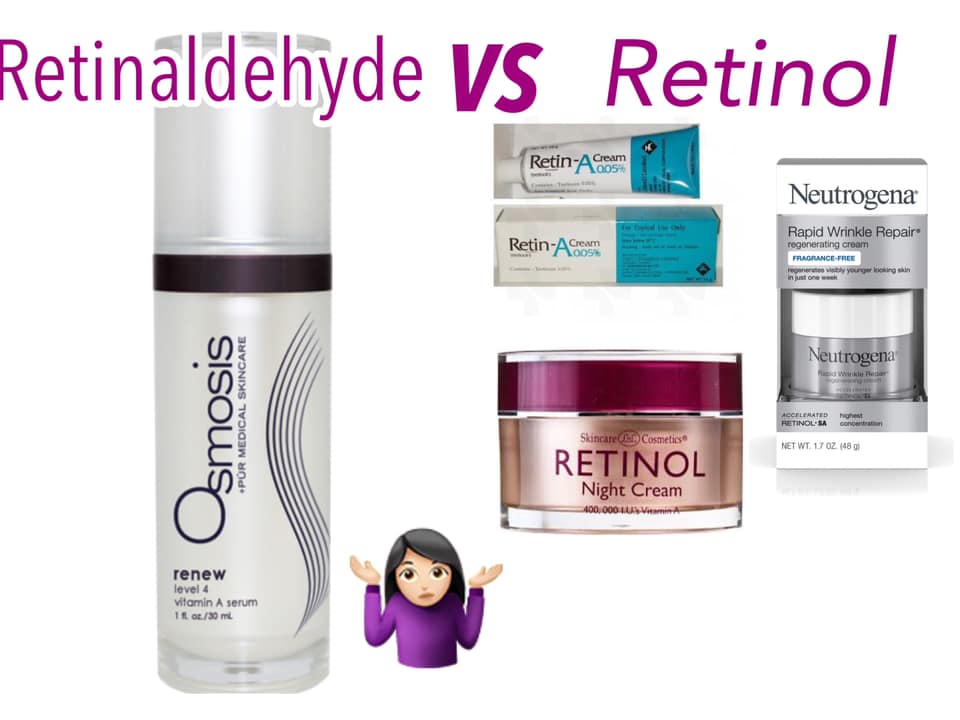Retin-A vs. Retinol vs. Retinaldehyde
"This topic is so confusing to so many people!!!
Neutrogena, L’Oreal, Oil of Olay and Aveeno used to be just run-of-the-mill drugstore products. If you are seeing our estheticians, you are probably not using these products, but they are so popular and prevalent that you know someone who is!
What they all have in common (including Retin-A) is that they have all jumped on the Vitamin A/Retinol bandwagon. These lines boast the anti-aging, wrinkle-erasing, skin-smoothing, complexion-brightening ingredient that will be the cure-all to all your skin issues, at the low drugstore price of less than $30 per bottle. You hear this a ton from us, but buyer beware!!! Not all Retinol is created equal, and not all vitamins are either. Some derivatives of this magical elixir have even been known to cause cancer.
The Basics of Retin-A:
Vitamin A itself isn’t bad. It plays a huge role in healthy eyes and skin, and it exists naturally in the liver. You can find Vitamin A in butter and eggs. It is a cousin to beta-carotene which can be found in colorful vegetables such as carrots, sweet potatoes, and spinach. Once you ingest Vitamin A, your body converts it to retinoic acid to reap the benefits. Thanks to the miracle of science, dermatologists refined Vitamin A to create topical retinoids that effectively break down into retinoic acid to treat various skin conditions. Vitamin A is basically where skin treatments like Retin-A come from, and even tretinoin products like Accutane. But don’t freak out. There’s more to know...The Good News
So this is how it works: Retinoids peel off the top layer of skin to give you that even skin tone. They also plump the layers below the surface, which smooth out wrinkles. Retinoids can boost collagen, keeping your skin firm and springy, by blocking the genes that cause it to break down and increasing other gene activity responsible for its production.The Not-So-Good News
Retinoids hate sunlight, so dermatologists recommend the nighttime application. When exposed to light, the active ingredients don’t work as well. Also, tretinoin molecules make the skin more sensitive to light by thinning the outer layer of skin by about a third, making the skin more sensitive to sunburn.Retin-A vs. Retinol vs. Retinaldehyde
Retin-A and its alternative brand counterparts cause skin irritation in some people. Retinol, a milder option, readily converts to retinoic acid in the skin, but is very unstable in heat, light, and air. Exposure to the elements renders it useless. This ingredient can often be found in products by Roc, Neutrogena and Philosophy.Retinol can be converted into Retinal which is also known as Retinaldehyde. This can then be converted into Retin-A (also known as Retinoic Acid) and is as equally as potent as Retinaldehyde. Retinaldehyde is a form of Vitamin A that is already stored, accepted and recognized in your body, which is not true of Retin-A. When you apply Retin-A to your skin, your body uses what it can, but the rest just sits on your skin causing damage and irritation!!!
In contrast, when you apply Retinaldehyde, our skin uses what it needs, and stores the rest. So you’re getting all the benefits of Retin-A, but none of the irritation.
The products that we use and sell contain Retinaldehyde (Osmosis Correct MD), so we know we're not causing irritation or applying an excess of what the body can actually use! This makes Retinaldehyde a NO BRAINER!
Credit to Abbie Major Skin Love

